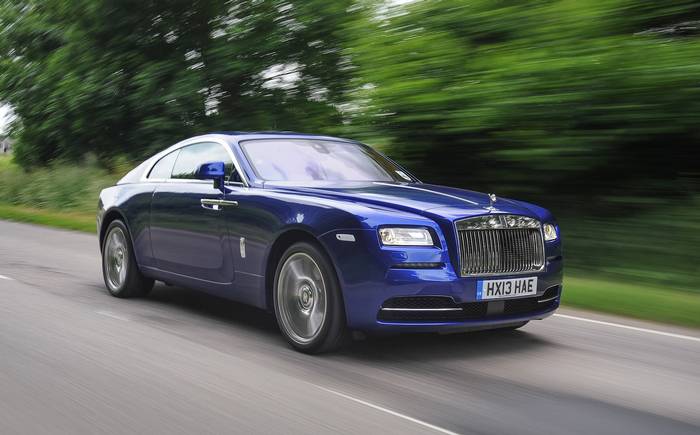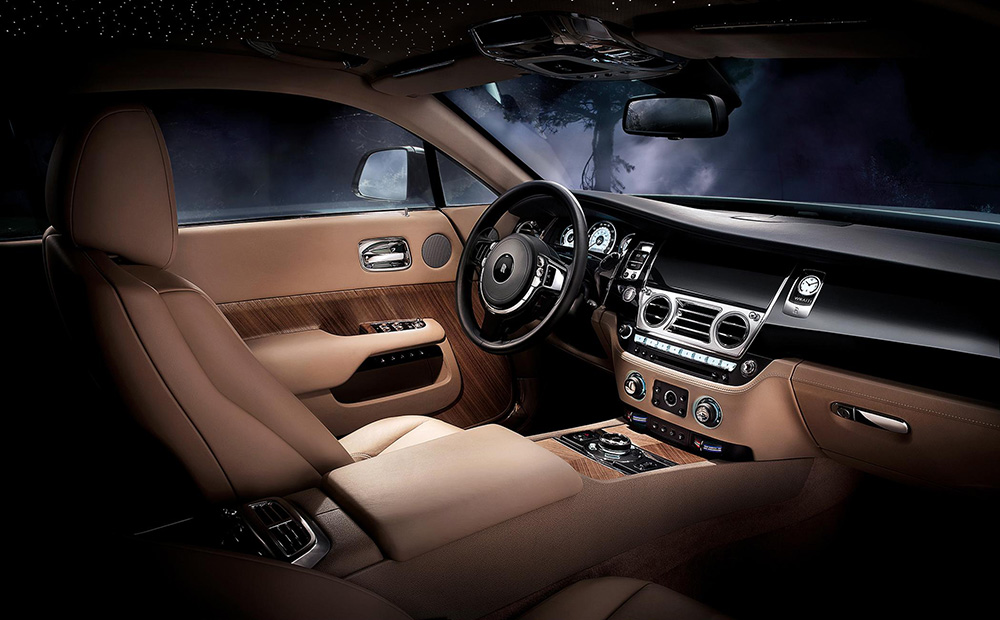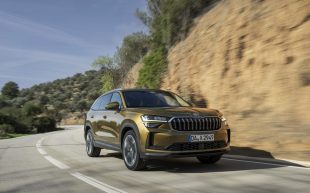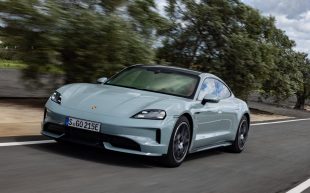Tiff Needell review: Rolls-Royce Wraith (2013)
Waft on, Mr Rolls, and leave "sporty" to the masses

I HAVE driven — or rather been in — only one Rolls-Royce. Last year on Fifth Gear we conducted a scientific test to see whether the new Range Rover was as luxurious, comfortable and smooth as the smoothest car in the world — the Phantom.
Which is why I found myself sitting in the back of the Roller with my co-presenter Jason Plato, laughing, joking and clinking champagne glasses as Vicki Butler-Henderson roared around trying to make us spill our drinks, which, being consummate professionals, we didn’t, so the Phantom won. As I said: it was a scientific test.
Rolls-Royce is the epitome of a smooth ride, lavish comfort and imperious luxury — the sort of car that makes moving from one place to another about as exhausting as sitting in a leather armchair with the Sunday papers. So I wasn’t surprised to find that the latest model, the Wraith, is steeped in oak panelling that wouldn’t be out of place on a Riva powerboat and carpets so deep that they could have come out of a 1970s porn film. So far, so traditional.
But, as Rolls-Royce is coyly keen to say but doesn’t, this car isn’t like other Rolls-Royces — it’s one that’s supposed to be driven rather than one in which the owner is chauffeured. Some have even commented that this car has a — whisper it — sporty feel.
This is the coupé version of the four-door Ghost — not that its creators would ever describe it as anything that vulgar — but still, it has an undeniably rakish look. The engineers at the Goodwood factory have chopped 7in out of the Ghost’s middle, given it a sloping roofline and a lowered, widened and stiffened stance. It has also been blessed with an extra 60bhp or so in its 6.6-litre V12, which now has more than 600bhp. That is a lot of power. In fact the Wraith is the most powerful Rolls-Royce in history, and although its top speed has been limited to 155mph, a measure of its true performance can be seen by the fact that it will hit 60mph in just over four seconds. That puts it in the same sprint category as a Porsche 911, the only difference being that while the Porsche weighs about 1¾ tons, the Wraith comes in at almost 2½ tons.
Of course the comparison is very, erm, vulgar. But Rolls asked for it: gone are the days when it refused to publish power figures and, when pushed, representatives would answer “sufficient”. And if you’re going to make a play of the fact that this is the most powerful and “dynamic” car in your range, you should expect people to make comparisons. So, it is faster than pretty much anything else on the road but also heavier, longer and wider.
Despite its lowered suspension, the driver still has that commanding position above hoi polloi on the road below, and despite the shortened wheelbase, there is still plenty of room in the front and in the back.

As well as the oak trim — tudor oak Canadel panelling, according to the options list — the seats are swathed in leather that the company assured me came from cattle kept in such luxury the fences were made from wood rather than barbed wire to prevent any accidental scratches to their hides. Look up and the headliner of the cabin appears dotted with hundreds of tiny stars — in reality 1,390 optional fibre-optic lights sewn into the roof lining. The effect is oddly hypnotic, if slightly bling.
In the driver’s seat the only clues that this is going to be different from any other Rolls-Royce are a small, thin, hard and traditionally round steering wheel and little orange dabs on the end of every dial’s needle that allude to the aircraft instruments of the past. I’d somehow expected the “power reserve” dial to be replaced by a rev counter, but maybe that is a step too far even for a rock’n’Roller.
Edge out onto the open road, the nose cameras showing you the views to left and right, and a gentle prod on the right pedal, even with 50% of the power left unused, causes the Wraith to surge forward at a serious rate of knots. Its satellite navigation system is immediately at work, suggesting to the gearbox which of its eight gears it should automatically select, having read the severity of the corner ahead and taken into account the manner in which I am driving. The car remains silent, however, apart from the dull and distant hum of the engine.
So just how “sporty” is this car? Others have noted that in upping the power and stiffening the ride, the Wraith risks throwing the baby out with the bath water: if buyers want a luxury performance car, there are other opulent brands that do it better.
What Rolls-Royce customers want is effortless waftability. Well, I can happily report that it takes just one corner to reveal that reports of the Wraith’s sportiness have been greatly exaggerated — this isn’t really a performance automobile.
While the well-tuned suspension responds instantly and the long bonnet heads exactly where you want it, there’s still plenty of roll in this Rolls, and while the steering is well weighted, the only real feedback you get is when the lane departure warning system causes the wheel to vibrate. True, the harder suspension doesn’t smother the bumps as well as you’d expect, but this is hardly a car to inspire you to head for the twists and turns of the Col de Turini.
The reaction from other drivers was decidedly more mixed than I was expecting. On my trip to the New Forest along narrow country roads, where despite its bulk the Rolls weaved with near-perfect precision, the responsive steering making it feel much smaller than it was, it had passers-by staring with a mix of envy and bewilderment. It looked like a Roller but there was something unusual about it.
Back at home I couldn’t make up my mind. While I revelled in its power and loved the 1930s styling, especially the two-tone paint job, for every aspect of the Wraith that I admired, there was another that niggled. To close the suicide doors, for example, you can press a button on the dash. Which sounds great, except it isn’t a one-touch button: you need to keep it pressed in until the doors thud shut — a process that takes so long, you get bored and slam them closed manually.
In my mind Rolls-Royce has always been an aristocratic two-fingered salute to the rest of the motor industry: yes, you may make faster, more efficient cars, but we make Rolls-Royces, the best cars in the world. And yet I couldn’t help wondering who would buy this car. Perhaps Premier League footballers — except their garages are already full of Bentley Continentals. Not traditional Rolls-Royce owners, who would miss the cosseted luxury of the Phantom or indeed the four doors of the Ghost. And not people like me: if I had a spare £235,000, I would be putting my name down for the Ferrari FF — for my money the best luxury performance car you can buy.
Plus I spilt my coffee when I went around a particularly tight right-hander.
Verdict ★★★★☆
Leave sports cars to Ferrari
Rolls-Royce Wraith specifications
- Price:
- £235,000
- Engine:
- 6592cc, V12, twin turbo
- Power:
- 624bhp @ 5600 rpm
- Torque:
- 590 lb ft @ 1500rpm
- Transmission:
- 8-speed automatic
- Acceleration:
- 0-62mph in 4.4sec
- Top speed:
- 155mph
- Fuel:
- 20.2mpg (combined)
- CO2:
- 327g/km
- Road tax band:
- M
- Release date:
- On sale now




